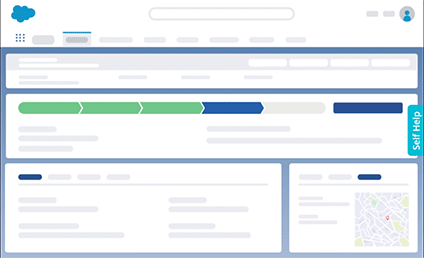

Disha Gupta


For enterprise learning and development teams, creating an effective employee development plan is a strategic imperative. Employee development plans serve as a blueprint for upskilling your workforce with the competencies they need to excel and drive organizational success.
With the rise of hybrid work, digital transformation, and ever-changing industry regulations, a well-crafted development plan ensures enterprise agility, productivity, and long-term employee engagement.
However, in enterprise settings, you are planning for more than just a handful of employees; you’re potentially impacting thousands of team members, spread across geographies and functions.
This amplifies the complexity of your L&D strategy, but also increases the potential ROI of effective employee development.
In this guide, we will take you through the step-by-step procedure of creating an effective employee development plan for your organization that will provide real value for your employees’ growth.
An employee development plan is a structured framework designed to guide an employee’s growth, skill enhancement, and career progression within an organization. It outlines a set of goals, strategies, and actions aimed at developing an employee’s capabilities, knowledge, and competencies to align with both their individual career aspirations and the organization’s broader objectives.
An effective employee development plan typically involves identifying skill gaps, setting achievable goals, offering relevant training and learning opportunities, providing mentorship or coaching, and evaluating progress regularly. Such plans not only contribute to the employee’s professional growth and job satisfaction but also bolster the organization’s talent pool and overall performance.
Creating an effective employee development plan involves a systematic approach that encompasses various stages, from identifying organizational needs to celebrating success.
Here’s a detailed explanation of each step:
Begin by understanding the overarching goals and objectives of your organization. Identify the skills and competencies required to achieve these goals. This could involve discussions with senior management, analyzing market trends, and evaluating the company’s strategic direction.
Evaluate the skills and competencies of each employee. Use performance evaluations, self-assessments, and feedback from managers and colleagues to identify areas where development is needed. This step helps to tailor the development plan to individual needs.
Define specific, measurable, achievable, relevant, and time-bound (SMART) development objectives for each employee. SMART goals provide clarity and direction, making it easier to track progress and measure success.
Here are some examples of SMART employee development goals:
I want to improve my communication skills
I want to better develop my leadership skills
I want to expand my technical proficiencies
I want to enhance my time management skills
Determine the best employee training methods for delivering training and development activities. This can include eLearning, on-the-job training, role playing, coaching, peer-to-peer learning, blended learning, etc. The choice should align with the employee’s learning style and the skills being developed.
Allocate the necessary resources for the development initiatives. This includes budget, time, access to learning materials, and any required tools. Ensure that employees have the support they need to pursue their development goals.
Schedule regular check-ins between employees and their managers or mentors. These discussions provide opportunities to review progress, discuss challenges, and make any necessary adjustments to the development plan.
Provide ongoing feedback to employees throughout the development process. Acknowledge their achievements and provide constructive guidance. This continuous feedback loop enhances engagement and encourages improvement.
Regularly monitor the employee’s progress toward their development goals. Assess how well they are aligning with the plan, whether they are acquiring the desired skills, and if there’s any need for modification.
Recognize and celebrate the milestones and achievements reached by employees. This fosters a positive learning culture and motivates employees to continue pursuing their development objectives.
Employee development plans should remain flexible. If an employee’s career goals or organizational needs change, be prepared to adjust the plan accordingly. Regularly reassess the effectiveness of the plan and make refinements as needed.
Download your customizable copy of an employee development plan template.
✓ Thank you, the template will be sent to your email
When you hire new employees, you do not immediately discover their talents and weaknesses. Employee development plans help engage team members during new employee training and enable managers to understand them better by closely observing their potential. This also allows managers to identify employee development areas and discover skills new hires lack, allowing them to set up upskill training in order to help them do better in the future.
Engaged employees are always more productive and motivated to do jobs in the best way possible. You can boost employee engagement in your team by offering professional development courses and material. Regular learning and development initiatives create a culture of engagement, make individuals feel valued and invested in their work, prevent workplace contentness, and keep employees productive.
Providing learning and development opportunities for your employees make them feel supported, inspired, and satisfied with their role in the company. This in turn increases their confidence, boosts productivity at work, and allows them to do their jobs more efficiently.
According to Linkedin, 94% of employees would stay with you longer if you invest in learning and development opportunities. To attract new talent as well as keep your current employees satisfied, you need to show them that your company values its workforce and invests in their development. Employee development plans make potential employees feel that they’re getting more than just a paycheck and give them a sense of security about their future with your organization.
Organizational change is challenging and overwhelming for your workforce. Although the employee development plans are built for your employees’ own benefit, they still might not get on board with it if they’re not confident in their own abilities to adapt to it. When people feel threatened by their own shortcomings (real or imagined), they protect themselves from failure by resisting the change.
To avoid change resistance, you need to show the value of the development plan to your workforce. Educate your employees on how the new changes and developments will make their lives better.
It’s a huge challenge for L&D teams to get learners to attend, actively participate, and follow the employee development plan because some employees lack engagement on the cognitive, emotional, and behavioral levels. The root cause of this problem is that employees might find some programs unnecessary and irrelevant or the training content might not be engaging or interactive enough to hold the learner’s attention.
L&D teams need to find increasingly creative ways to address the paradox of employees who want to learn, but struggle to keep themselves motivated and engaged in the training and development process.
When work, family life, politics, and a slew of other demands are draining employees’ energy, development training sometimes adds too much to their stress, which makes them resist development training. Traditional employee training methods such as instructor-led classroom training demands a lot of time from an employee’s already hectic schedule, which most of them are not willing to invest.
The solution here is to embed the development training within your employees’ daily schedule via self-paced learning. Self-paced learning enables employees to access learning materials and go through training at their convenient time and at a speed that works best for them.
Whatfix enables self-paced learning for your employees via interactive walkthroughs and video training. Whatfix’s self-paced and interactive on-the-job training solution augments training by helping employees in learning while doing, within the business application.

Employee: X, Senior Software Engineer
Current Skill Assessment: X is highly skilled technically but lacks experience in leading and guiding junior team members.
Development Goals:
Development Activities and Timeline:
Resources and Support:
Evaluation:
Employee: Y, Data Analyst
Current Skill Assessment: Y is proficient in basic data analysis techniques but lacks expertise in advanced data modeling.
Development Goals:
Development Activities and Timeline:
Resources and Support:
Evaluation:
A well-trained, dynamic and motivated workforce is crucial to any organization. The best way to raise employees to such standards is to invest in their continuous development to foster an engaged workforce, which is proven to be productive, profitable, and motivated.
Invest in digital adoption platforms like Whatfix to get the maximum ROI on your employee development programs. Using DAPs as your training software empowers employees to upskill themselves on the latest tools, applications, or processes without disrupting their workflow and productivity. These platforms offer step-by-step tutorials, real-time guidance, and personalized assistance to provide an interactive, user-friendly learning experience for your employees.
Thank you for subscribing!